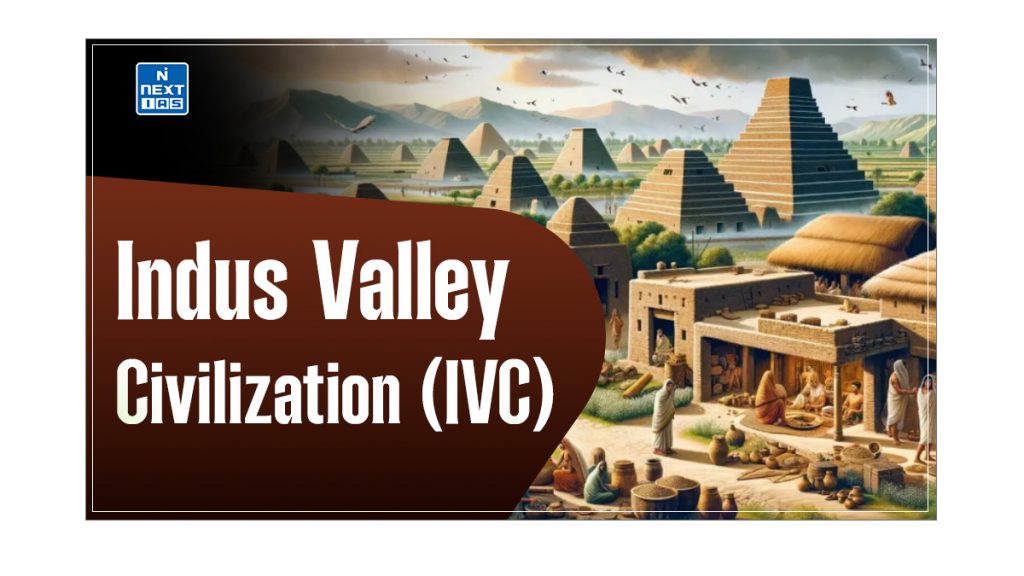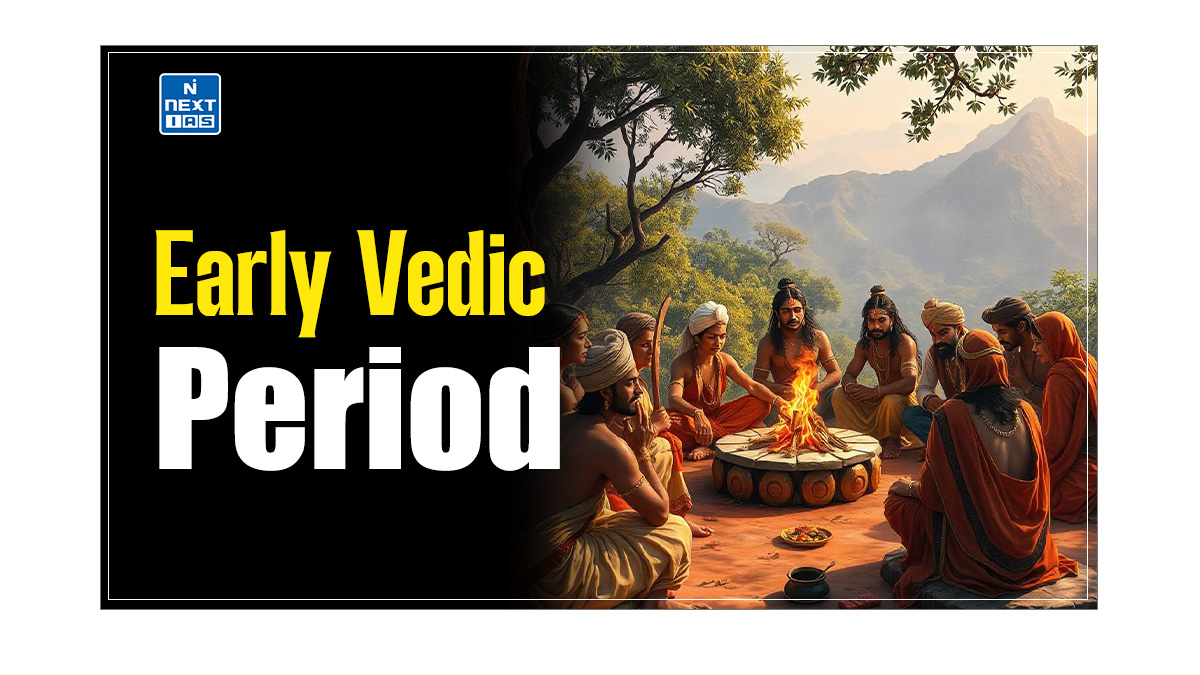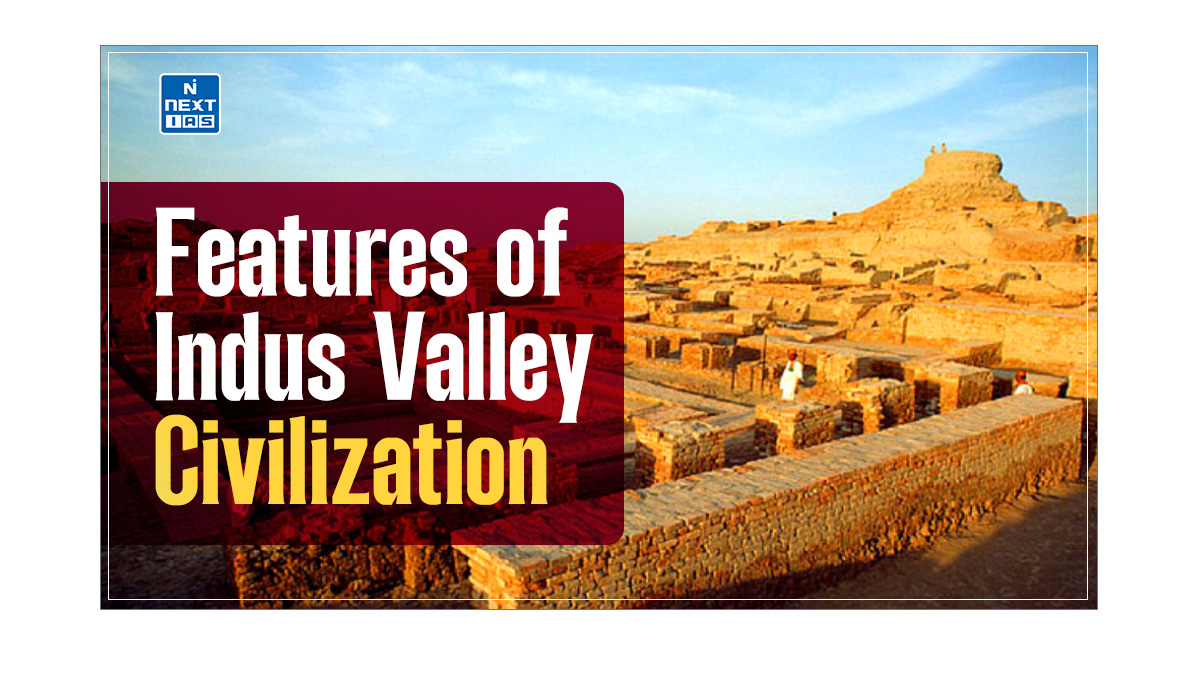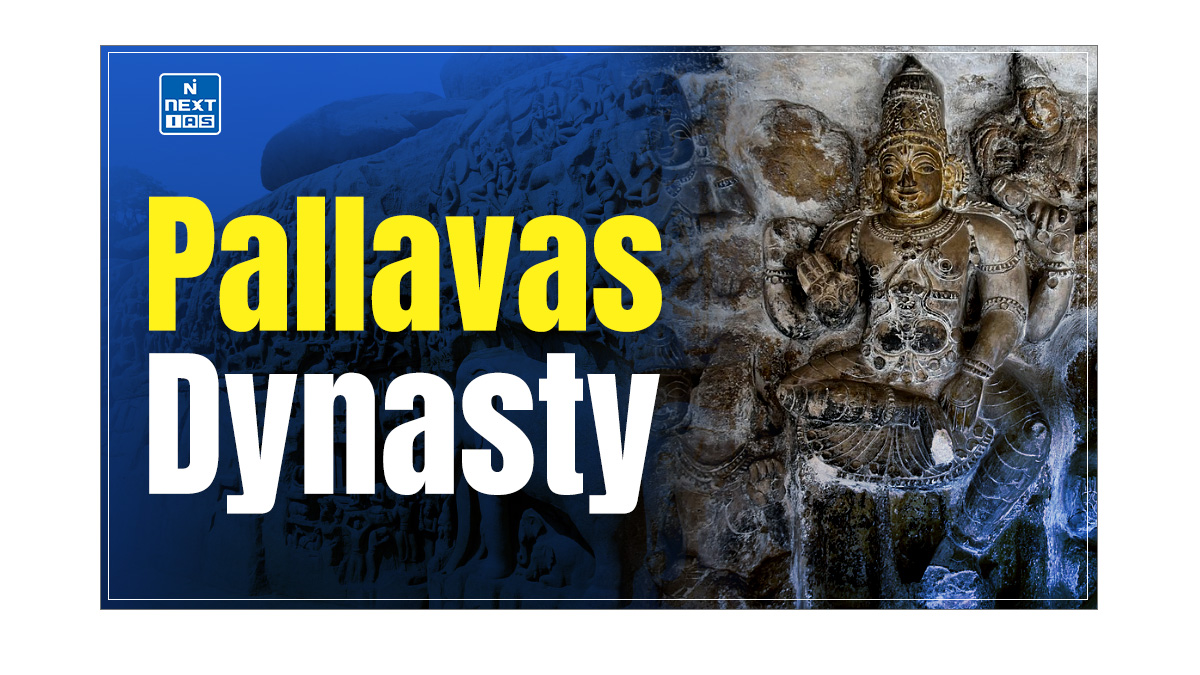
The Indus Valley Civilization (IVC) was one of the world’s earliest urban cultures, flourishing around 2500 BCE in the regions that now constitute Pakistan and northwest India. Its significance lies in its advanced city planning, architecture, and social organisation, which set the foundation for future civilisations. This article aims to study in detail the Indus Valley Civilization, its features, phases, essential sites, theories of decline, and other related aspects.
About Indus Valley Civilization (IVC)
- The middle of the third millennium BCE saw the rise of an urban civilisation known as the Indus or Harappan Civilization (circa 2750-1750 BCE).
- The Indus Valley Civilization (IVC) is called Harappan because it was first discovered in 1921 at the modern site of Harappa, located in the West Punjab provinces of Pakistan.
- Indian archaeologists Daya Ram Sahni and Rakhaldas Banerji discovered the cities of Harappa (on the Ravi) and Mohenjo-Daro, or ‘Mound of the Dead’ (on the Indus), in 1921 and 1922, respectively.
Discovery of Indus Valley Civilization (IVC)
The discovery of the Indus Valley Civilization (IVC) are as follows:
- Indian archaeologists Daya Ram Sahni and Rakhaldas Banerji discovered the cities of Harappa (on the Ravi) and Mohenjo-Daro, or ‘Mound of the Dead’ (on the Indus), in 1921 and 1922, respectively.
- In 1924, John Marshall recognised the significance of these archaeological findings. The subsequent excavations uncovered a fragment of India’s past, revealing a civilisation that might be as ancient as those of Mesopotamia and Egypt.
- Regarding the origin of the Harappa civilisation, several scholars have proposed different theories regarding the Indus Valley Civilization (IVC):
- According to E.J.H. Mackay, the origin of civilisation is attributed to the migration of people from Sumer (Southern Mesopotamia).
- D.H. Gordon and Martin Wheeler believed it resulted from migration from Western Asia.
- Amlanand Ghosh suggested that the Harappa civilisation developed from a pre-existing culture.
Geographical Extent of Indus Valley Civilization
The geographical extent of the Indus Valley Civilization (IVC) is as follows:
- The epicentre of the civilisation was in present-day Pakistan and North-Western India.
- From this central area, the civilisation expanded in all directions.
- Historians generally believe that the Harappa, Ghaggar, and Mohenjo-Daro axis represents the core region of the civilisation, as most settlements in this area show significant similarities.
- This region formed a triangle and covered approximately 1,299,600 square kilometres.
- Surkotda and Sutkagen-Dor, on the Makran coast in the hilly Baluchistan region, marked the civilisation’s western frontiers.
- Bargaon, Manpur, and Alamgirpur represented the eastern frontiers in the Ganga-Yamuna doab of Uttar Pradesh.
- The northern frontiers included the cities of Manda in Jammu and Ropar in Punjab.
- The southern frontiers were in Daimabad in Maharashtra and Bhagatrav in Gujarat.
- In Gujarat, the Harappan settlements were scattered across Kutch and Kathiawar.
Phases of Indus Valley Civilization
The phases of the Indus Valley Civilization (IVC) can be seen in the following table:
| Phases | Time | Era | Significance |
| Pre Harappan phase | 5500 to 3500 BCE | Neolithic | – Settlements like Mehrgarh and Kili Ghul Muhammad appeared in Baluchistan and the Indus plains. – Cattle rearing was the main occupation with limited cultivation. This led to the seasonal occupation of the villages. – Permanent villages emerged after some time with a production surplus. – There is evidence of mud houses, pottery and craft production. |
| Harappan phase | 3500 to 2600 BCE | Early Harappan Period | – The number of settlements increased in plains and hills. – The use of copper wheels and ploughs marked this era. – An extraordinary range of pottery forms like black on red shows the beginning of many regional traditions. This later converged to give a more uniform pottery tradition throughout the Indus Valley. – This era was marked by the development of religious consciousness, which the origins of themes such as Pipal, Humped Bulls, Cobras, horned deity in seals, and Mother Goddess can supplant. – Many buildings, such as granary and defensive walls, were built during this period. – The emergence of long-distance trade can also be seen during this era. |
| 2600 to 1900 BCE | Mature Harappan Period | – The emergence of new larger cities marked this era. – Town planning with efficient drainage mechanisms, road networks, uniform houses and walled cities was evidenced in Dholavira. – This era was marked by the rise of long-distance trade on a large scale with Mesopotamia, and hence, the need for trade-related seals and uniform systems of weights and measures arose. – The art of metallurgy and alloy-making grew rapidly. Abundant bronze sculptures are found in the Indus Valley region. – The Art of making toys and jewellery reached its prime during this phase. This became one of the main articles of trade with other civilisations. A script was developed by now. | |
| Post Harappan Phase | 1900 BCE onwards | Late Harappan Period | – This phase marks the decline of the Harappan Valley civilisation. In this phase, many Harappan sites were abandoned. – Interregional trade exchanges declined. – City life was abandoned on a large scale. – The village cultures of Punjab and Sutluj-Yamuna are divided, and Gujarat imbibes the Harappan crafts and pottery traditions. |
Features of Indus Valley Civilization (IVC)
The features of the Indus Valley Civilization (IVC) are as follows:
- V. Gordon Childe was one of the earliest to make attempts to define a city in Harappa and Mohenjodaro.
- He described them as symbols of a revolution that marked a new economic stage in society’s evolution.
- He said this “Urban Revolution” was neither sudden nor violent. It was a gradual socio-economic change.
- While the Indus civilisation shared many general features with contemporary Bronze Age cultures, such as the Sumerian civilisation of Mesopotamia and Old Kingdom Egypt, it had its own distinct identity.
- For one thing, with a geographical spread of more than a million square kilometres, this was the largest urban culture and civilisation of its time.
Read our detailed article on the Features of Indus Valley Civilization.
Important Sites of Indus Valley Civilization (IVC)
The important sites of the Indus Valley Civilization (IVC) are as follows:
- The Indus Valley Civilization, one of the world’s earliest urban cultures, thrived along the banks of major rivers in present-day Pakistan and northwestern India.
- This ancient civilisation was marked by its advanced urban planning, sophisticated drainage systems, and impressive architectural achievements.
- The settlements were strategically located to harness the benefits of fertile river valleys and were characterised by their well-organized grid layouts, standardised brick constructions, and vibrant trade networks.
- The civilisation’s sites reveal a complex society with significant arts, crafts, and trade achievements, showcasing its role as a major centre of early civilisation in South Asia.
Read our detailed article on the Important Sites of Indus Valley Civilization.
Decline of the Indus Valley Civilization
The decline of the Indus Valley Civilization (IVC) can be seen as follows:
- Scholars have examined the theory of the decline of the Indus Valley civilisation, looking for evidence that may point to natural calamities or sudden invasions.
- These were some of the causes thought by scholars for the sudden decline of the Indus Valley civilisation.
- Massive floods and earthquakes
- Of the shifting in the course of rivers, the Indus River
- Gradual drying up of the Ghaggar-Hakra River System
- Aryan Invasion Theory
- Growing demands of the centres disturbed the ecology of the region, and it crumbled under its weight
- Some historians believe that the Harappans migrated towards the Gangetic region of India.
- Massive Floods and Earthquakes – The Indus Valley Civilization faced significant challenges from natural disasters such as massive floods and earthquakes.
- These calamities likely disrupted daily life, damaged infrastructure, and contributed to the eventual decline of civilisation.
- Repeated flooding from the Indus River may have led to shifts in settlement patterns, while earthquakes could have caused widespread destruction, weakening the society’s stability and resilience.
- Shifting in the Course of the Indus River – H.T. Lambrick believes that the Indus River changed its course, leading the people of Mohenjo-Daro to move towards it.
- According to him, this process might have been repeated several times, leading to the depletion of food production in the surrounding areas and creating problems for potable water.
- The main criticism of the theory is that this can only explain the decline of Mohenjo-Daro, not other cities.
- Increased Aridity and Drying Up of Ghaggar–Hakra River – D.P. Agarwal and Sood introduced the theory of Harappan’s decline due to increased aridity and drying up of the Ghaggar-Hakra River. Harappa was ecologically susceptible, and a slight loss in moisture could turn this semi-arid region into an arid one. This would have resulted in loss of food production and led to the desertion of the Harappan cities.
- Aryan Invasion Theory – Ramaprasad Chanda first proposed the destruction of the Harappa civilisation by Aryan invaders.
- Mortimer Wheeler built upon this idea based on references from the Rig Veda.
- The Rig Veda mentions the destruction of forts and walled cities by lord Indra or Purandara (Fort destroyer).
- Another reference from the Rig Veda is to Hariyupiya, which resembles Harappa. Wheeler also points to the skeletal remains found at Mohenjo-Daro as proof of the Aryan massacre. Some skeletons are also found with wound marks.
- Later, Wheeler acknowledged floods, resource overexploitation, and trade decline as factors in Harappan’s decline but insisted that the Aryan invasion dealt the civilisation the final blow.
- Disturbed Ecology of the Region – Scholars like Fairservis tried to explain Harappan Valley’s decline in terms of ecological imbalances caused by resource overexploitation and a rising population.
- According to Fairservis’s calculation, the delicate ecological balance of these semi-arid areas was being disturbed because the human and cattle populations were fast depleting the scanty forests, food, and fuel resources. The need exceeded the area’s production capabilities.
- This led to forest depletion, creating ecological imbalances and frequent floods and droughts.
- The decreasing food production and lack of resources forced the Harappan people to leave their cities and settle elsewhere.
Conclusion
In conclusion, the Indus Valley Civilization is a testament to ancient societies’ early ingenuity and advanced urban planning. Despite its eventual decline due to various natural and possibly human-induced factors, the legacy of the Indus Valley Civilization (IVC) continues to influence modern understanding of early human civilisation and its capacity for complex societal organisation. Studying the Indus Valley Civilization (IVC) features, phases, and the reasons for its decline offers valuable insights into the rise and fall of great cultures.
Frequently Asked Questions (FAQs)
What is Indus Valley Civilization?
The Indus Valley Civilization, also known as the Harappan Civilization, was an ancient civilisation that flourished between 2500 and 1900 BCE in the northwestern regions of South Asia, particularly in present-day Pakistan and northwest India.
Who first discovered Indus Valley Civilization?
The Indus Valley Civilization was first discovered by British archaeologist Sir John Marshall and his team in the early 1920s.
Who discovered the Indus Valley Civilisation?
The Indus Valley Civilization was first discovered by British archaeologist Sir John Marshall and his team in the early 1920s.
When was Indus Valley Civilization discovered?
The Indus Valley Civilization was discovered in the early 1920s.






